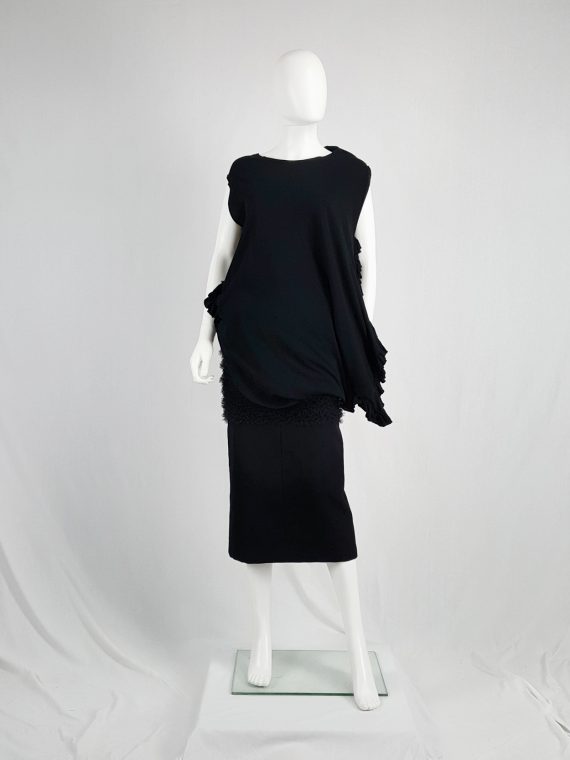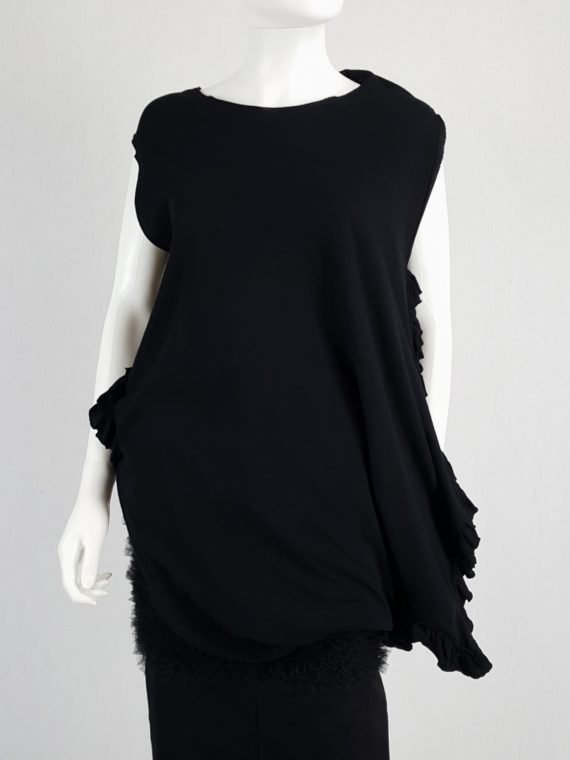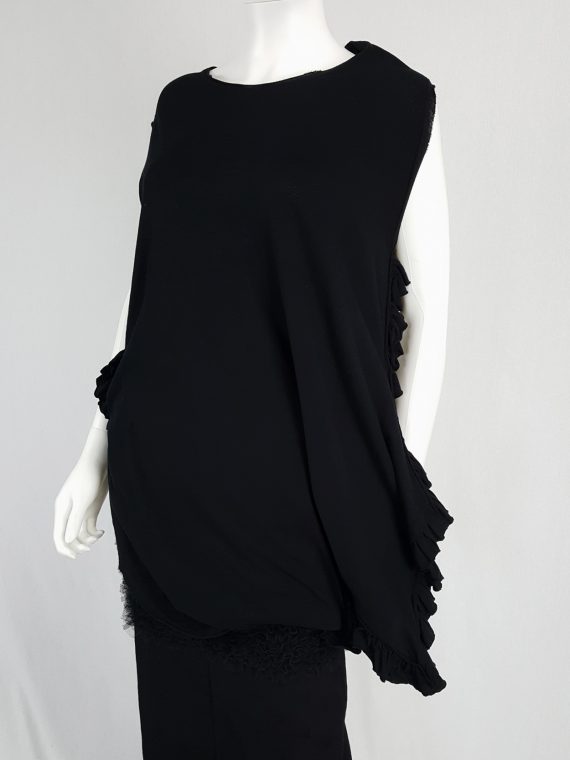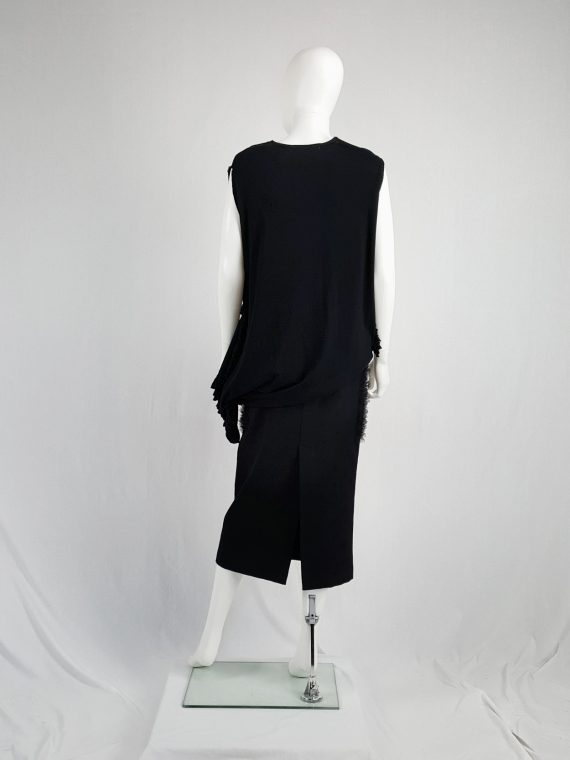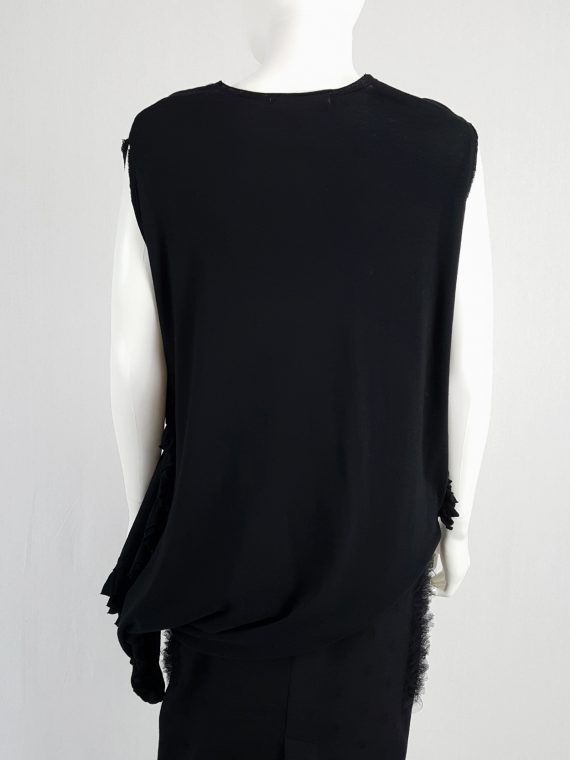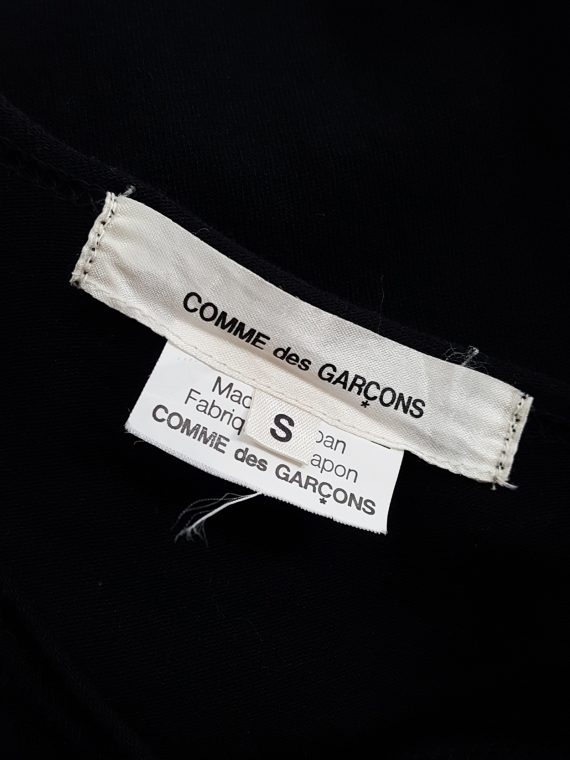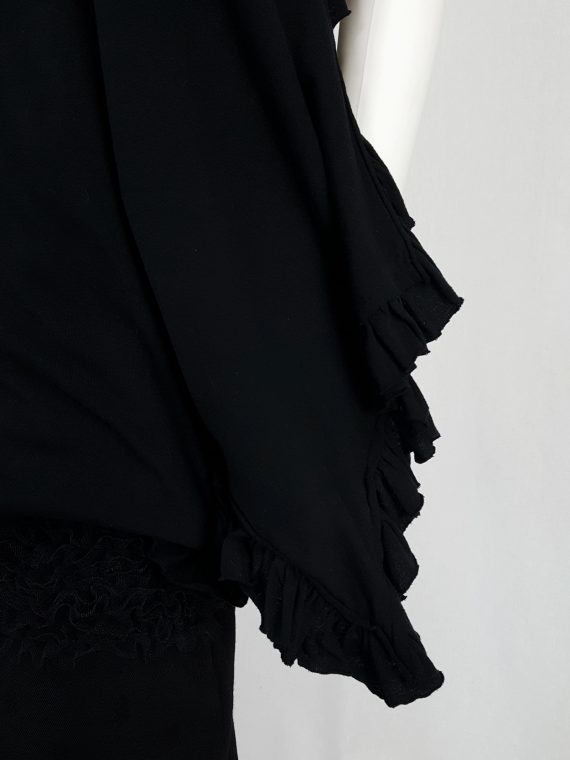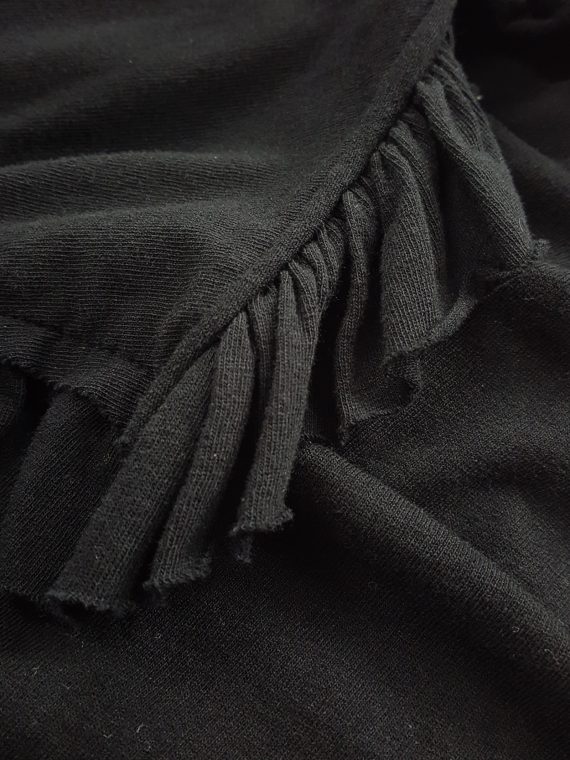Comme des Garçons black draped top with side ruffles — spring 2013
Size: S
Shoulder to shoulder: 44 cm
Armpit to armpit: 54 cm
Width: 70 cm
Length: 86 cm
Composition:
Unknown (presumably cotton)
Details:
Black oval top
Sleeveless model
Side draped when worn
Curved hemlines
Ruffled detail along the sideseams
Frayed finish on the seams
From the spring 2013 collection
AD 2012
Condition: 4/5
Good condition
Description
Similar items
-
Maison Martin Margiela dark navy cardigan with added frayed trims — fall 2004
-
Y’s Yohji Yamamoto khaki green deconstructed shirt with detachable band
-
Maison Martin Margiela black jumper with sewn together sleeves — fall 2005
-
Ann Demeulemeester black long transformable shirt with 4 button rows — fall 2009
-
Maison Martin Margiela brown cardigan with beige curved back and curved sleeves — fall 2004
-
Junya Watanabe black forward curved shirt with back cowl drape — fall 2011
Shop the look
About Rei Kawakubo
Rei Kawakubo is a Japanese fashion designer, however, she didn’t study fashion but fine arts and literature at Keio University in Tokyo.
After graduation, she worked as a stylist before launching her label Comme des Garçons. Going against the 1980s super feminine look, she sent an all black, deconstructed collection on the runway, dubbed “anti-fashion” and “Hiroshima Chic” by easily shocked and insensitive journalists.
During the 1980s, her garments were primarily in black and dark grey or white. By the time of her Paris debut in 1981, Kawakubo was so famous that her fans were dubbed ‘the crows’ in the Japanese press.
Comme des Garçons kept on growing, evolving into a Comme de Garçons ‘world’ with about 20 distinct lines. This also gave Rei Kawakubo the possibility to give employees their own line, like Junya Watanabe, (the now discontinued) Tao Kurihara en the recently added Noir by Kei Ninomiya.
Kawakubo specializes in anti-fashion; producing deconstructed garments, which are draped around the body in an asymmetric shape, making them look awkward and uncomfortable. The hems are often unfinished and frayed.
Rei Kawakubo is reclusive and doesn’t give many interviews, she let’s her creations speak for themselves. She is know as a fashion icon and influence for designers like Martin Margiela, Ann Demeulemeester and Helmut Lang which have all name checked Kawakubo as an inspiration.


















